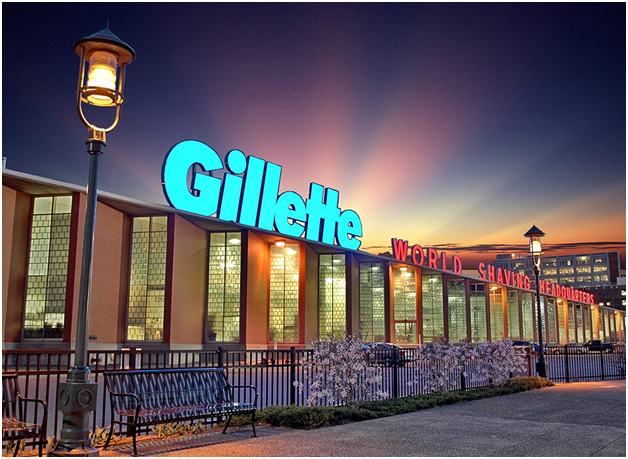Monopoly vs. Monopolization: Which of the two yields higher cash flow returns? [Tuesdays: Return Driven Strategy]

Miles Everson’s Business Builder Daily speaks to the heart of what great marketers, business leaders, and other professionals need to succeed in advertising, communications, managing their investments, career strategy, and more.
A Note from Miles Everson:
Are you familiar with Return Driven Strategy (RDS)?
Discussed in the book, “Driven,” this pyramid-shaped framework has 11 tenets and 3 foundations you can apply to your business strategy. When executed properly, these principles will help you achieve true wealth and value creation.
Today, let’s focus on two business case studies related to the third tenet of RDS:
Target and Dominate Markets.
Continue reading to know the difference between “monopoly” and “monopolization,” and which of the two yields higher returns and reinvestment rates for a company.
Miles Everson
CEO, MBO Partners
Chairman of the Advisory Board, The I Institute
Return Driven Strategy
Have you ever tried playing the “Monopoly” board game?
It’s a real estate game where the goal of every player is to remain financially solvent while forcing opponents into bankruptcy. Each player is given an equal amount of play money at the start of the game, then they move around the board according to the throw of a pair of dice.
The participant who lands on an unowned property on the board has the option to buy it. However, if he or she lands on an owned property by another player, he or she must pay rent to that player.
Meanwhile, if a participant acquires a monopoly—a particular group of properties on the board game—he or she may purchase improvements for those properties to substantially add to their rental fee.
Throughout the game, players who no longer have enough play money to buy properties or pay rents and utilities will be declared bankrupt and eliminated from the game. The last one standing will be the winner.

Photo from The Spruce Crafts
Monopoly vs. Monopolization As Seen in the Lens of Return Driven Strategy’s (RDS) Tenet 3
The “Monopoly” board game provides a good metaphor in the real business world:
To achieve wealth creation, companies must be a dominant player in a particular industry and a leading provider of customer segments’ needs (Tenet 3 of RDS).
Let’s take a look at these businesses’ case studies…
Procter & Gamble (P&G) purchased the Gillette Company in 2006. Prior to that acquisition, Gillette was a separate, publicly traded company with high earning power.

Photo from GreenBiz
During that time, one would say the brand certainly fulfilled otherwise unmet customer needs (Tenet 2 of RDS). After all, customers were willing to pay higher prices for Gillette’s Mach 3 and Fuzion razor blades because they didn’t see other substitutes for that particular segment.
What else?
Gillette’s products were not only enjoyed and appreciated by customers but were also the ONLY ONES providing that particular enjoyment and need fulfillment!
As a result, the brand experienced amazingly high cash flow returns for years and created economic monopolies due to the uniqueness of its offerings, and customers freely choosing such products over others.
[Cash Flow Returns: Also known as “cash flow return on investment” (CFROI), this refers to the valuation metric that acts as a proxy for a company’s economic return.
Monopoly: An exclusive possession or control of the supply of or trade in a commodity or service.]
Simply said, Gillette achieved RDS’ Tenet 2 (Fulfill Otherwise Unmet Customer Needs) and Tenet 3 (Target and Dominate Markets) very well, but with one exception:
The company’s dominance still wasn’t enough to sustain its leadership position in the industry it’s in.
Huh? What does this mean?
Shouldn’t a monopoly be a good investment?
Wouldn’t investors snatch up the chance to own a business with lots of offerings that lack substitutes?
Here’s the thing: Despite Gillette’s monopoly-like cash flow returns, the company’s stock price dropped from 1996 to 2000… and before P&G acquired Gillette, the latter’s stock price still hadn’t recovered even after several years.
On the other hand, Walmart is a business that draws numerous customers from different parts of the world for decades. Its cash flow returns are high, as one might expect.

Photo from KXAN
As a company that experiences enviable growth, Walmart doesn’t only create dominance in one category. It also succeeds in providing offerings in terms of prices and convenience, both of which have no adequate substitutes.
Additionally, Walmart is able to repeat this strategy category after category—from toys to jewelries to groceries to many others. As a result, the company effectively monopolized various market segments in different industries!
[Monopolization: The act or process of taking possession or control of the largest part of something so other people or businesses are prevented from sharing it.]
So… what did Walmart do right that Gillette failed to realize in its business strategy?
Walmart monopolized; Gillette simply created a monopoly.
At its peak, Gillette settled for the fact that its customers appreciated its offerings and were willing to pay regardless of the price. The company stayed within the men’s personal grooming industry, and no longer tried to dominate other markets with bigger groups of underserved customers.
Meanwhile, Walmart monopolized several market segments and targeted larger groups of consumers. The company’s reward?
High returns AND high reinvestment rates! This powerful combination, together with Walmart’s exceptional stock price performance, supported the idea that monopolies do not maximize wealth in the long run. Monopolization does.
—
According to Professor Joel Litman and Dr. Mark L. Frigo, bigger rewards come to firms that solve or fulfill the needs of BIGGER groups of customers. Businesses that fight over customers whose needs are already serviced will always see relatively lower profits.
Simply said, dominating large groups of underserved customers is an easier path to high returns.
Besides, the needs of society aren’t small. The world consists of growing populations with growing expectations. That’s why Professor Litman and Dr. Frigo say the larger the segment with a larger set of otherwise unmet needs, the more potential for wealth creation.
With this mindset, firms will be more ethically committed to drive positive changes into their businesses and society as a whole.
We hope you find today’s topic insightful and helpful!
(This article is from The Business Builder Daily, a newsletter by The I Institute in collaboration with MBO Partners.)
About The Dynamic Marketing Communiqué’s
“Tuesdays: Return Driven Strategy”
In the book, “Driven,” authors Professor Joel Litman and Dr. Mark L. Frigo said that the goal of every long-term successful business strategy should incorporate the combined necessity of “making the world a better place” and “getting wealthy.”
That is why they created Return Driven Strategy and Career Driven Strategy―frameworks that were built to help leaders and professionals plan and evaluate businesses so they can also help others achieve their organizational goals and career goals.
The frameworks describe the plans and actions that drive returns for anyone in an organization such as independent contractors, marketers, brand managers, communicators, and other people in any field. These actions lead to the creation of wealth and value for customers, employees, shareholders, and the society.
Every Tuesday, we’ll highlight case studies, business strategies, tips, and insights related to Return Driven Strategy and Career Driven Strategy.
In planning, building, or managing brands and businesses, these strategies, case studies, and guidelines will help you choose what specific actions to take and when to take them.
Hope you found this week’s insights interesting and helpful.
Stay tuned for next Tuesday’s “Return Driven Strategy!”
Cheers,
Kyle Yu
Head of Marketing
Valens Dynamic Marketing Capabilities
Powered by Valens Research
www.valens-research.com




